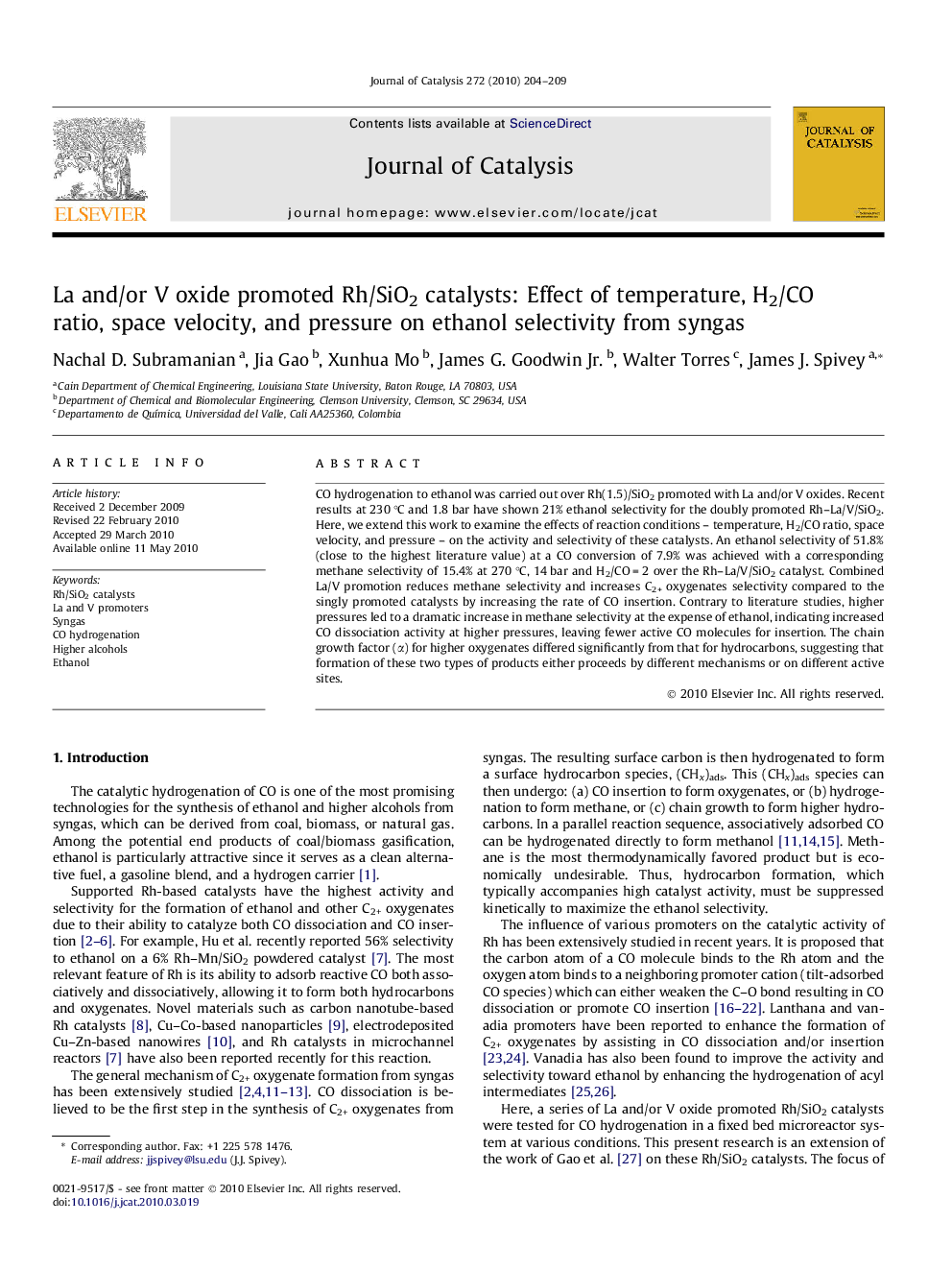| Article ID | Journal | Published Year | Pages | File Type |
|---|---|---|---|---|
| 61706 | Journal of Catalysis | 2010 | 6 Pages |
CO hydrogenation to ethanol was carried out over Rh(1.5)/SiO2 promoted with La and/or V oxides. Recent results at 230 °C and 1.8 bar have shown 21% ethanol selectivity for the doubly promoted Rh–La/V/SiO2. Here, we extend this work to examine the effects of reaction conditions – temperature, H2/CO ratio, space velocity, and pressure – on the activity and selectivity of these catalysts. An ethanol selectivity of 51.8% (close to the highest literature value) at a CO conversion of 7.9% was achieved with a corresponding methane selectivity of 15.4% at 270 °C, 14 bar and H2/CO = 2 over the Rh–La/V/SiO2 catalyst. Combined La/V promotion reduces methane selectivity and increases C2+ oxygenates selectivity compared to the singly promoted catalysts by increasing the rate of CO insertion. Contrary to literature studies, higher pressures led to a dramatic increase in methane selectivity at the expense of ethanol, indicating increased CO dissociation activity at higher pressures, leaving fewer active CO molecules for insertion. The chain growth factor (α) for higher oxygenates differed significantly from that for hydrocarbons, suggesting that formation of these two types of products either proceeds by different mechanisms or on different active sites.
Graphical abstractCO hydrogenation over La–V-oxide-promoted Rh/SiO2 catalyst showed distinctly different chain growth factors (α) for oxygenates and hydrocarbons, suggesting that their formation either proceeds by different mechanisms or on different active sites.Figure optionsDownload full-size imageDownload high-quality image (70 K)Download as PowerPoint slide
